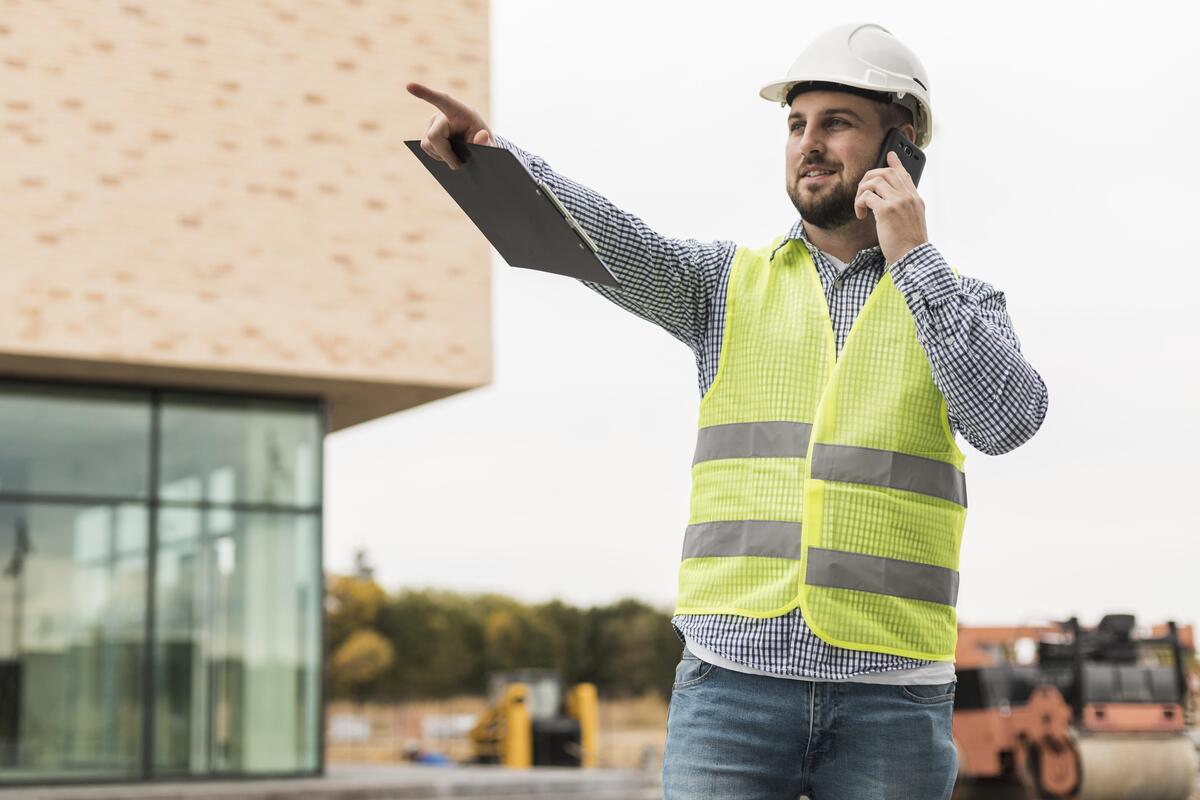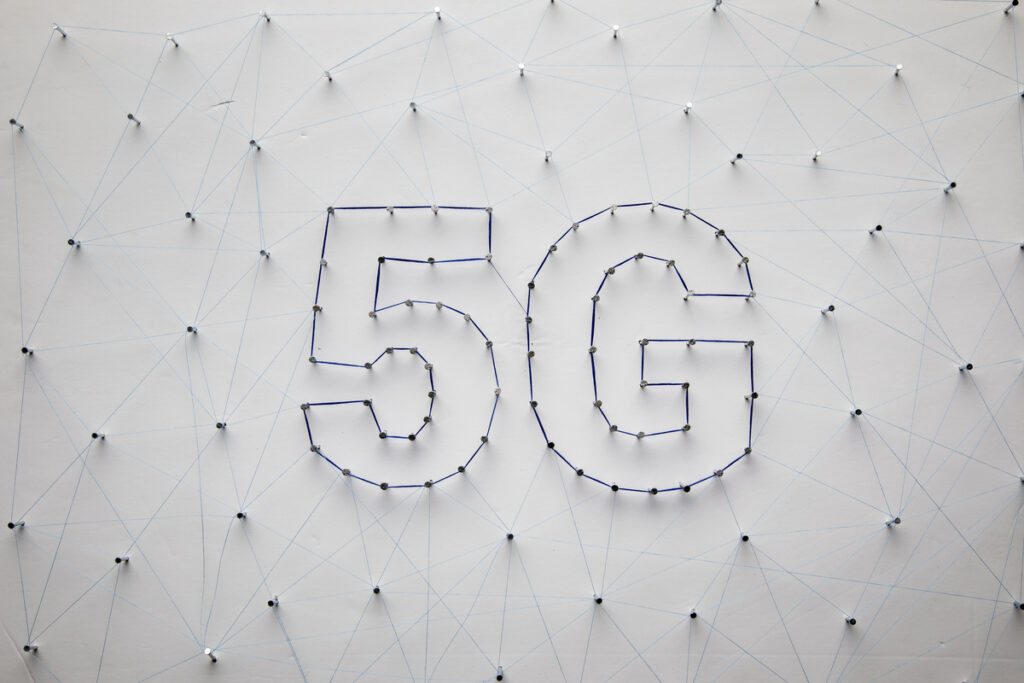The advent of 5G technology in construction has transformed the industry, guiding forward digital transformation while offering new possibilities for creativity. With its lightning-fast connectivity, reduced latency, and increased capacity, 5G in buildings is revolutionizing construction sites across the globe. This state-of-the-art technology makes it easier to transfer data in real time, increase communication, and integrate IoT devices and smart construction equipment seamlessly.
The construction sector stands to benefit greatly from increased 5G adoption in terms of project management, safety procedures, and overall productivity. This examination of 5G technology in the construction industry will cover its main advantages, uses, and how it is expected to change the industry going forward.
Table of Contents
What is 5G Technology in Construction?
The cutting-edge integration of incredibly fast, low-latency wireless networks into building processes is represented by 5G technology in construction industry. On building sites, this fifth-generation mobile network technology greatly improves connectivity and communication. With latency as low as 1 millisecond and speeds up to 100 times faster than 4G, 5G technology in construction enables real-time data exchange and collaboration between contractors, engineers, and architects.
This development changes the way projects are managed from start to finish by making it easier to use IoT devices, drones in construction, augmented reality, and real-time monitoring. The adoption of 5G technology in construction sector is essential for enhancing productivity, security, and project results in general, propelling the sector toward a more networked and smarter future.
Suggested article to read: Explore the Impact of Augmented Reality in Construction (2024) | Building Automation System (BAS): Ultimate Guide for 2024

Application of 5G Technology in Construction
Here are the top 5 use cases of 5G technology in construction enhancing your business:
1. Automation in Construction
Automation, facilitated by 5G technology in construction, is altering the industry. 5G’s large bandwidth, high speed, and low latency are essential for autonomous robots that require dependable communication and fast processing. Trucks and loaders equipped with sensors and HD cameras may work autonomously, managing heavy lifting and moving machinery.
Even automated brick-laying robots that can build a house’s wall in a single day have been developed by engineers. Drone clusters with sophisticated cameras, building sensors, AI, and software may be able to accomplish difficult jobs more quickly. With their constant operation, these devices can expedite tedious jobs and lessen the scarcity of skilled labor in the business.
2. Ability for Big Data in Construction and AI-Controlled Supplies
5G technology in construction, along with edge computing, allows novel innovations. Devices can access more substantial computer power thanks to edge computing, which moves computing power closer to the source. Robots and other AI-powered gadgets that employ machine learning to continuously improve now have more options. These devices can send massive amounts of data, including video, swiftly for processing at the edge or in the cloud thanks to 5G technology in construction’s low latency and large bandwidth. This capacity reduces expenses and increases the potential for innovative technology in the building industry.
3. Improved Cooperation
5G technology in construction significantly improves cooperation among partners, stakeholders, and employees, who frequently work at various locations or regions. 5G technology in construction makes it possible for improved remote collaboration by giving users access to HD cameras and sensor data. For example, experts can detect problems on-site and analyze them remotely.
On-site engineers are assisted with repairs by augmented reality (AR) glasses and equipment. In construction, 5G technology enables quick data sharing and the use of digital twins, or virtual replicas of actual systems, which guarantee that all parties are operating from the most recent information, can track progress, and can make choices more quickly and intelligently.
4. Enhanced Safety, Health, and Project Compliant
5G technology in construction improves compliance and security. Workers’ dangers are decreased when dangerous activities are performed by robots and drones. Wearable technology, such protective caps with sensors built in, can track the whereabouts and health of employees and sound an alarm when needed. In addition to monitoring the surroundings, these gadgets can alert wearers of gas leaks or bad air quality.
Construction project managers can better satisfy compliance requirements by accurately collecting asset and inspection information with the use of digital tools like IoT and digital surveying. Teams working on the project can monitor and update project data via tablets and cellphones, giving them access to information on project progress almost instantly.
Suggested article to read: Enhancing Safety by Co-Pilot for Construction Technology (2024) | Top 30 Tips for Safety Solutions in Hazardus Building Sites (2024)

5. Drones
Drones with HD cameras and complex sensors are becoming indispensable in the construction industry. In order to track the status of a project, they might assess possible build sites and perform routine surveys of construction sites. Combining drones with 5G technology in construction and cloud computing improves their abilities. Drones have the ability to gather data on their own and send it in almost real-time to supervisors off-site. Collaboration and compliance are aided by this data’s ability to swiftly identify problems, such as heat-sensitive cameras that disclose fractures or water damage.
Conclusion
In conclusion, the integration of 5G technology in construction is not just an improvement but an important leap towards smarter, more effective, and safer construction practices. 5G technology in construction’s improved connectivity and low latency make it possible to share data in real-time, improve team communication, and make efficient use of cutting-edge technologies like AI in construction and IoT.
With the increasing complexity and data-driven nature of building projects, 5G provides the strong network infrastructure required to meet these expectations. By using 5G technology in construction, the sector can better address issues, make better use of its resources, and complete projects faster and more precisely. Without a question, digital building is the way of the future, and 5G technology is leading this fascinating change.
Suggested article for reading:
The Role of Digital Transformation in Sustainable Future; 2024 Review
Reskilling and Upskilling for a Bright Future in Digital Transformation
The Impact of Digital Transformation on the Workforce; 2024 Guide
Difference and Similarities: Digitization, Digitalization, and Digital Transformation
Resources:
GSMA | PBCToday | Verizon | UKConnect | ConstructionHQ
For all the pictures: Freepik



